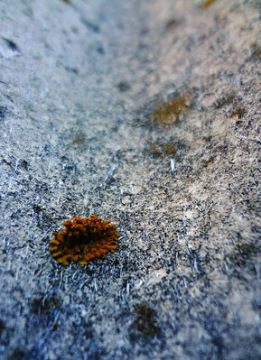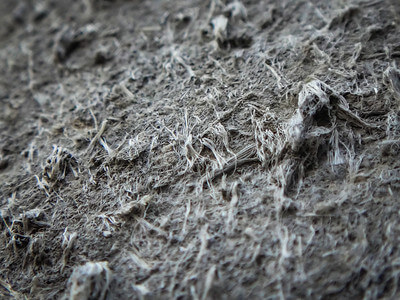A. P. Green Industries
A.P. Green Industries manufactured refractory products that contained asbestos from the 1940s to the 1970s. They filed for Chapter 11 bankruptcy in 2002 because of mounting asbestos lawsuits. In 2009, the APG Asbestos Trust was created. It contains $901 million to compensate workers with asbestos-related diseases.

A.P. Green Industries and Asbestos

A.P. Green Industries manufactured products intended to withstand high heat and some of them contained asbestos. Asbestos is a naturally occurring mineral that was added to many products to make them resistant to heat and chemical corrosion.
Products such as adhesives and cements contained varying levels of asbestos. Plant workers and product installers were routinely exposed to asbestos in these products. It is estimated that A.P. Green products contained an average of 3% to 5% asbestos, though some contained as much as 18%.
A.P. Green plant employees regularly worked in an environment polluted with airborne asbestos fibers. This exposure put workers at risk of developing asbestos-related diseases such as mesothelioma, lung cancer and asbestosis.
Out of 1,200 products manufactured by A. P. Green, 22 contained asbestos. A.P. Green removed asbestos from all but one product, Green PC, by 1973. In 1976 A.P. Green discontinued production of Green PC.
A.P. Green Products Containing Asbestos
- A.P. Green Insulating Cement was manufactured from 1948-1971 and contained between 3.5% and 9% asbestos.
- SK-7 Cement was made from 1953-1972 and contained 2.3% asbestos. It was used in shipbuilding and roofing and on boilers, ovens and furnaces.
- Castable Block Mix was made from 1955-1972 and contained 7.8% asbestos.
- Green PC was made in the 1960s and 1970s and contained 1% asbestos.
- Kast-O-Lite Gunning Refractory was made from 1956-1972 and contained 1% asbestos.
- Insulation Adhesive was made from 1947-1972 and contained 15.5% asbestos.
- Insulation Coating was manufactured from 1948-1971 and contained between 6.5% and 18% asbestos. This coating was weatherproof and used on insulation to resist moisture.
- Mizzou GR was an asbestos-containing gunning refractory product made from 1966-1972.
A.P. Green manufactured other asbestos-containing products, including Castable Mix, Greencast, Steelplant Castable, Dropsy Fry, Insblock, Loose Wool Insulation, LoAbrade GR, Therm-O-Flake Coating and Therm-O-Flake Block Insulation. These products were produced between the 1940s and the early 1970s.
Development of APG Asbestos Trust
From 1995 to 2007, workers filed 357,000 asbestos lawsuits against A.P. Green. The company and two of its affiliates, Global Industrial Technologies Inc. and Harbison-Walker, filed for Chapter 11 bankruptcy in February 2002.
Although RHI Refractories, the parent company, cited the economic recession as a reason for the Chapter 11 filing, asbestos-related litigation was the primary cause.
Companies that file Chapter 11 bankruptcy because of asbestos litigation are often required to create a trust with funds to compensate future asbestos victims. Because A.P. Green was acquired by U.S. Gypsum Company in 1967, its trust is set up under the United States Gypsum Asbestos Personal Injury Trust.
The APG Asbestos Trust opened its claims review process on Dec. 2, 2013. The filing deadline for claimants diagnosed prior to 2002 was Sept. 6, 2017.
Claimants diagnosed after Feb. 14, 2002, must file a claim with the trust within three years of their diagnosis. The initial payment percentage for the APG Asbestos Trust is set at 4.5%.
Most asbestos trust funds only pay a percentage of each claim to ensure enough money is available for all present and future claims.
In June 2021, the trust made permanent policy adjustments to accommodate the COVID-19 pandemic. Moving forward, claimants may sign documents electronically, and a notary is no longer required to sign certain documents.
On July 26, 2017, the qualified job site list was updated. It includes thousands of job sites where A.P. Green products were used. Claimants must have worked at one of the qualified job sites to file a claim with the trust.

Gain access to trust funds, grants and other forms of compensation for you or your loved ones.
Get Help NowAsbestos Litigation Involving A.P. Green
A.P. Green has been listed as a defendant in many asbestos lawsuits because their asbestos products caused workers to develop asbestos-related diseases.
Plaintiffs with asbestos-related conditions, such as mesothelioma and lung cancer, have filed lawsuits against A.P. Green Industries claiming their products caused their illnesses.
These lawsuits caused A.P. Green to file for bankruptcy in 2002.
Asbestos Exposure in Plant Workers

Scientific studies have documented the conditions and effects of working with asbestos products in a plant or factory setting, which is primarily where A.P. Green products were manufactured and used.
A 2015 Italian study followed the effects of working at or living near an asbestos cement factory. From 2000-2011, study authors tracked cases of mesothelioma in the area and found 147 cases when only 17 were expected.
A.P. Green manufactured SK-7 Cement, an asbestos-containing cement, which contained 2.3% asbestos. Employees who manufactured this product and workers who used it on the job were at risk of asbestos exposure that could result in illness later in life.
Researchers in a 2016 Polish study analyzed the conditions of different asbestos plants and found the highest concentrations of asbestos fibers at textile plants, followed by insulation product plants. The lowest concentrations were found at asbestos cement plants.
A.P. Green manufactured asbestos cement and asbestos insulation products.
Workers in occupations such as bricklaying, pipefitting and insulation installation were at risk of exposure to asbestos in A.P. Green products.
Recommended Reading


